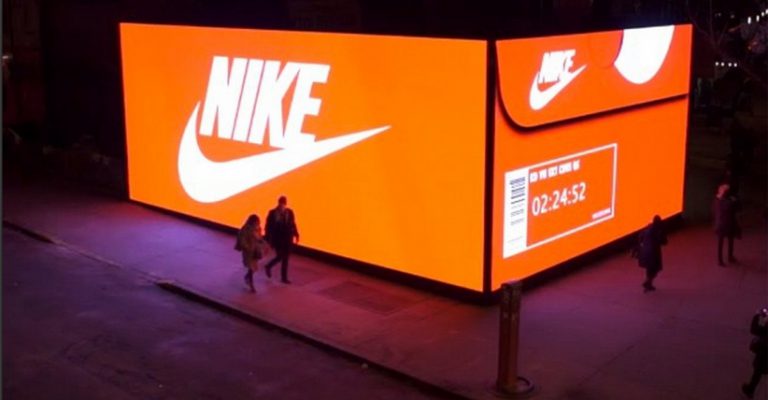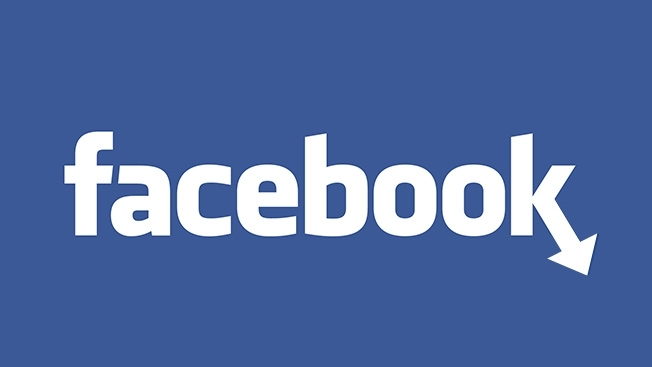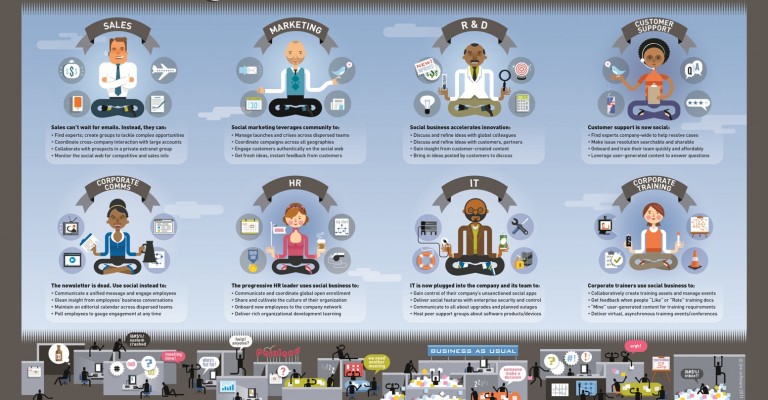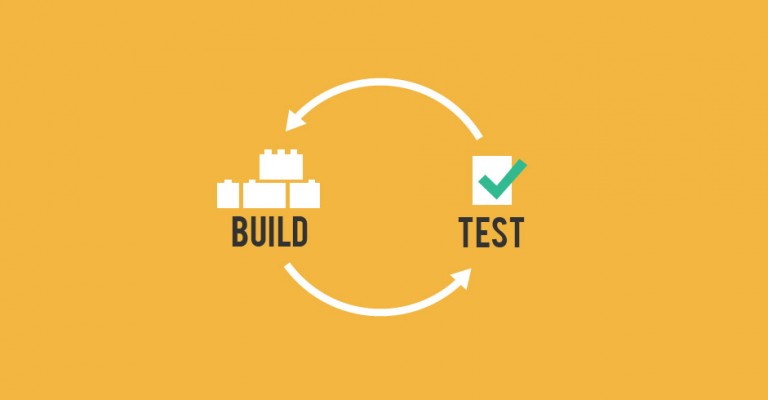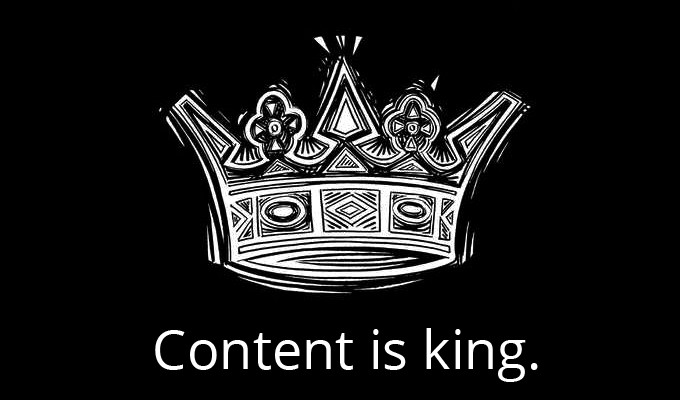Ever wonder just how far some companies will go to get noticed? See how 10 companies succeeded–and five failed miserably–when it came to making some noise.
It’s kind of like dating–that’s the bad news. There’s a lot of effort involved, and sometimes, there’s some humiliation. But when you’re an entrepreneur competing for the affections of the world, there’s always a new heart and mind to try to win over because attracting customers never ends. So it’s no wonder you want to try to bring in a ton of them at once by pulling off a marketing stunt.
The good news is, marketing stunts often work. Throughout history, entrepreneurs have tried to be creative about how they inform the public of their product. In 1903, for instance, newspaper publisher Henri Desgrange started a new bicycle road race as a temporary publicity stunt to promote his newspaper, never imagining that the Tour de France would be going strong more than 100 years later. The Miss America Pageant was created in 1921 as a clever way to attract business and tourists to Atlantic City. The Pillsbury Bake-Off, which was launched in 1949, was intended to be a one-time event, but it’s become an annual event for the baking company.
But history is also littered with tales of marketing stunts that ran amok. According to a 1926 Associated Press article, for instance, there was a candy company in Berlin that tried dropping foil-wrapped chocolates on its citizens to advertise their services. But police had to step in after they received complaints of bruises and of children’s Sunday school suits being ruined; they had numerous gripes from bald-headed men who were getting splattered with the sweet treats. In 1976, several airlines launched an ill-conceived marketing stunt and began giving away free drinks to coach passengers in order to convince people to fly. It was apparently popular with the public, but passengers weren’t the only ones getting hammered: So were the companies’ bottom lines as passengers drank up their profits.
In the spirit of helping you learn from other business’s successes and failures, we offer our list of 10 marketing stunts that exceeded expectations–and five that badly flopped.
10 Marketing Stunts Done Right
Company: Taco Bell Corp.
Year of the Stunt: 1996
The Stunt: In the morning, an ad appeared in The New York Times with a headline that read: “Taco Bell Buys the Liberty Bell.” The ad copy explained that Taco Bell was “pleased to announce that we have agreed to purchase the Liberty Bell, one of our country’s most historic treasures. It will now be called the ‘Taco Liberty Bell’ and will still be accessible to the American public for viewing. While some may find this controversial, we hope our move will prompt other corporations to take similar action to do their part to reduce the country’s debt.” It sounded logical, if distasteful. In another press release, Taco Bell helpfully explained that people had been “adopting” highways for years and that purchasing a national treasure was just a way of furthering that idea.
What Happened Next: Thousands of people called in their complaints to the home of the Liberty Bell, the National Historic Park in Philadelphia, but by noon, Taco Bell admitted what many people suspected, since the day was, after all, April 1. The Taco Bell ad was an April Fool’s joke, and the media and public ate it up (no pun intended). More than 650 print media outlets and 400 broadcast outlets covered the prank, reaching more than 70 million Americans, according to Taco Bell’s marketing department. The company’s revenue increased by $500,000 that day, and by $600,000 more the following day, compared to the previous week’s sales. Even then-White House spokesperson Mike McCurry, when asked about the Taco Liberty Bell, got inspired to reveal that the Lincoln Memorial had been sold and would from now on be known as the Ford Lincoln Mercury Memorial.
Lesson Learned: It can pay to have a sense of humor about your business.
Company: ProShade
Year of the Stunt: 2006
The Stunt: ProShade is a company that makes a 3-in-1 gadget that combines a visor, sunglasses and a lanyard–which is a cord and a hook that allows you to carry something on them, like keys or a pocketknife or what have you. Proshade made an intriguing offer to the National Park Service earlier this year when they proposed to give $4 million to Mount Rushmore in exchange for getting to put a logo visor on each of the presidents’ heads. The company explained in a news release, “The National Park Service needs more support in preserving Mount Rushmore. There’s a dearth of funding in the budget to provide the national landmark with the facelift it needs. If they accept, we’d like this to go toward preservation efforts-including a much-needed pressurized wash.”
What Happened Next: Although the National Park Service didn’t take them up on their offer and despite the fact that any decent journalist knew they were being taken, the company received a fair amount of publicity for their outlandish offer. One writer for Adweek summed it up best in a column about ProShade’s concern for Mount Rushmore when he said, “This obviously smacks of a blatant publicity stunt, as I can’t conceive of anyone agreeing to this offer (especially at such a low price). But I’ll write about it, anyway.”
Lesson Learned: Journalists are human, too–they love a good story. Give it to them, and they just may take you up on writing about it.
Company: GoldenPalace.com
Year of the Stunt: 2004
The Stunt: Because they’re legally restricted from advertising in traditional media, online casino GoldenPalace.com, based in the Caribbean, has devised many marketing stunts to grab the public’s attention, from paying people to tattoo their logo on body parts to–earlier this year–purchasing William Shatner’s kidney stone for $25,000, so they could auction it off for charity. But their most famous marketing stunt took place a few years back when they bought a partially eaten grilled cheese sandwich for $28,000. But it wasn’t just any sandwich: It looked like the likeness of the Virgin Mary had been burned into the bread.
What Happened Next: The casino received worldwide attention for their purchase, getting media exposure in everything from USA Today to the BBC to China Daily. CNN, FOX and MSNBC all covered it, as did the evening news networks. The casino likely saw the $28,000 as a bargain, considering that not only did it buy them a lot of media exposure, they were able to milk it for quite awhile. They later generated a few more headlines for buying the pan that the revered grilled cheese sandwich was cooked on, they still sell T-shirts emblazoned with the image of the Virgin Mary grilled cheese sandwich, and they took the blessed food on a world tour, displaying it in places like the Hard Rock Caf? in Las Vegas. They even organized the Goldenpalace.com World Grilled Cheese Eating Championship in early 2005, in which world competitive eaters came to Venice, California, to eat as many grilled cheese sandwiches as possible–and to win $10,000.
Lesson Learned: Even the most outlandish marketing stunts–including those involving the often-dicey topic of religion–can work to a company’s advantage. The important thing to remember is that the marketing stunt should fit into the character of the business. You could definitely argue that any marketing stunt in the name of charity is only going to make an online gambling casino look better, especially when it’s located on an island outside the United States’ reach. And if the public’s expectations of your business are low to begin with, it’s harder for a marketing stunt to blow up in your face.
Company: Burger King
Year of the Stunt: 1998
The Stunt: Obviously inspired by the good folks at Taco Bell, Burger King put out an ad in USA Today, stating that they’d re-engineered their most famous sandwich in order to benefit 32 million Americans, and now they were ready to present . . . the Left-Handed Whopper. They offered details of how the sandwich had been designed to fit more comfortably in the left hand, including rotating the condiments and redistributing the weight of the toppings.
What Happened Next: This one didn’t go over quite as well as they’d hoped, since some of those 32 million Americans came into the restaurant and were annoyed to discover they couldn’t actually order the Left-Handed Whopper. Still, there was no real backlash when the restaurant chain admitted it had been an April Fool’s stunt, and since the ad brought in customers, including many who requested that they receive a right-handed burger, it should be called a success.
Lesson Learned: No harm in being inspired by successful marketing stunts that have come before, as long as you provide your own twist. The newspaper ad on April Fool’s Day had already been done, but otherwise, it was a creative gag. Certainly, Burger King was encouraged by the prank: They’ve continued to have a sense of humor when it comes to their marketing, their latest gag being the website, www.subservientchicken.com , which was unleashed on the internet without much fanfare–only a few friends of people who worked for Burger King’s ad agency were told about it–allowing word-of-mouth to spread and customers to discover it for themselves. For those of you who haven’t heard of it, it’s a video of somebody in a chicken suit who will fulfill (almost) any command you type in for it. In the past several months, the site has received nearly 20 million hits, and web surfers spend an average of six minutes playing the game. Seems it never hurts to have a sense of humor.
Company: SonicYoga.com
Year of the Stunt: 2002
The Stunt: Soon after launching his Manhattan-based yoga school in 2001, owner Jonathan Fields teamed up with Adelphi University to run the first-ever study on determining how many calories yoga burns. Knowing that the idea had media appeal–in fact, Fields also owns a marketing firm called Creative Vibe which he started in 2003–he sent a note to several top fitness magazine editors in New York City, explaining the concept of the study and offering an exclusive to whatever editor reached him first and agreed to do a story on the study. Within a week, Self magazine committed–and even asked to be in the study.
What Happened Next: After the article was written, an editor at Self called Fields and mentioned that it was a shame the studio didn’t have a yoga instruction video to go with the article. Fields instinctively said, “Oh, we do have a video. It’s in post-production, and it’ll be out by the publication date.” He quickly made up a name for the video and a price so the editor could add that information to the article, then he hung up and turned to his partner and said, “We need to make a yoga video very quickly.” They put together a video, which sold out after the magazine hit the shelves. Since then, they’ve made four more videos.
Lesson Learned: There’s something to be said for thinking big and on the fly. Fields could have been extremely embarrassed had he not been able to quickly produce a workout video that actually was generally well reviewed. And certainly another lesson to take away from this is that when you’re small, teaming up with big names–Adelphi University, Self magazine–can make you seem bigger to the public than you really are. But maybe the best lesson is to emulate Fields’ confidence. As Fields puts it, “If you want to be in the news, make news. You don’t need connections, you don’t need a publicist, but you do need to think way outside the box.” Having said that, Fields cautions, “Even in the throes of wild creativity, there’s a sound business reason, beyond publicity, to do what you want people to notice. Integrity is paramount.”
Stunts 5 – 10
Company: D.C. Comics
Year of the Stunt: 1993
The Stunt: Whether we’re talking art or not, D.C. Comics is–yes–a business, generating approximately $40 billion in revenue each year. So it’s not surprising that many people felt that releasing a comic book called The Death of Superman was a marketing stunt, given that nobody with half a brain really, truly thought this company was going to stop producing its most popular title, a hit since the Superman character was born in 1938. (According to a recent estimate published in Entertainment Weekly, since that time, Superman has generated some $4 billion in revenue.)
What Happened Next: The news media covered this development extensively, not quite as if a head of state had passed away, but seriously enough, and the comic book featuring his death sold out on the first day. As more issues were published, they kept selling out. In fact, millions of readers purchased not just The Death of Superman issue but numerous others that followed, including Funeral for a Friend and eventually–who would have guessed?–The Return of Superman.
Lesson Learned: If you have a popular product but feel that sales are stagnant or your customers’ excitement toward the brand is weaning, it may not be a bad idea to tinker with it. “Well, not so fast,” you’re probably thinking. “Jump into a time machine and see how people felt about New Coke in 1985.” But that wasn’t a marketing stunt–it was a colossal business mistake that offered numerous marketing challenges, which Coke eventually conquered, by reverting back to its original formula. Businesses revamp their products all the time, whether it’s coming out with a “new and improved” formula that truly is new and improved (unlike Coca-Cola’s 1985 misfire). But more often than not, instead of replacing the product, companies now just add new varieties to their line. What Superman and other beloved brands can teach us is that if you can create some drama around your product–and tug at your consumers’ emotions–you may just find that your potential for bringing in a profit is, well, super.
Company: Maui Beverages
Year of the Stunt: 2005
The Stunt: Because Maui Beverages isn’t very well known, their PR department suggested something splashy to let people know how fun this company was. First, they changed the founding executive titles–from Chief Executive Officer to Chief Entertainment Officer–and the Chief Technology Officer to Chief Tasting Officer–giving their company a more lighthearted appeal. Then they set out to prove that they really were fun. Maui Beverages’ PR company sent the founders, Mark Mahoney and Al Williams, to be hosts at an annual conference of food and beverage trade writers. They threw a huge party with a Jimmy Buffett-type “Caribbean island” theme and gave out lots of free sunglasses–as well as free samples of their product.
What Happened Next: Sure enough, after the title changes and the party, the company started getting a lot of positive press, which is directly affecting their bottom line: Their annual sales have gone from $6 million in 2004 to a projected $10 million by the end of this year.
Lesson Learned: A marketing stunt doesn’t have to be something that nobody’s ever done before, but you should “keep it fresh and exciting,” says founder Mahoney. Maui Beverages wasn’t the first company to throw a party–or to throw it for a group of people who could help get the word out about them. But what they did was creative and a much better strategy than hoping your company’s silent and under-the-radar personality will somehow get people to notice you anyway.
Company: Del Monte Foods
Year of the Stunt: 2006
The Stunt: This ongoing stunt is part of a larger trend called advertainment–pure entertainment wrapped around a product with hopes of convincing consumers to purchase said product. Del Monte is currently airing a reality show for cats on Animal Planet. They’ve put up a Meow Mix House with webcams for people to look in and watch these cats in one room–from 10 shelters around the country–where they hang out and have various visitors (think Big Brother, but for felines). Every Friday, on Animal Planet, Meow Mix announces which cat has been “voted out,” but in this case, that means being put up for adoption and receiving a year’s supply of Meow Mix.
What Happened Next: So far, so good. Meow Mix’s marketing director has been doing tons of interviews, and the brand is being associated with a worthy cause: cat adoption.
The Lesson: If you’re going to look for inspiration for a marketing idea, why not borrow from popular culture?
Company: Half.com
Year of the Stunt: 1999
The Stunt: Half.com, a retail website known for having sharply discounted items, paid Halfway, Oregon, to adopt the name Half.com for their town for a year. In exchange, Halfway received $100,000, 20 new computers for the local school and other financial subsidies.
What Happened Next: The media picked up on it, Half.com became very well known, and in 2000, five months after the IPO, eBay bought the company for $300 million. Halfway, Oregon, was a little less fortunate. According to Halfway, Oregon’s official website, “Half.com made many promises. Some of which were honored and others not.”
The Lesson: Creativity works, and you can apparently talk anyone into anything, if you show them the money. It also helped that Halfway, Oregon, felt it was a winning situation for them, too, beyond the monetary reward: They were the first dotcom town in the nation–though not the first community to change their name to a brand name. That distinction goes to Truth or Consequences, New Mexico, which changed its name from Hot Springs in 1950, when radio personality Ralph Edwards was hosting a popular radio show called “Truth or Consequences.” He’d said he wished a town loved the show enough to rename itself after the program–and if one would, he’d air a live program from the community. Hot Springs, anxious to shed its name, anyway, since people confused it with the town in Arkansas, jumped at the chance.
Companies: PokerShare.com and CasinoShare.com
Year of the Stunt: 2006
The Stunt: Another casino, unable to advertise in traditional media; another amazing marketing stunt. Over Memorial Day weekend this year, with gas prices hovering around $3 a gallon, PokerShare.com and its newly launched CasinoShare.com gave away more than 8,000 gallons of gasoline to hundreds of New Yorkers. In a long, snaking line of traffic, New Yorkers lined up to receive $40 of free gas while free food was distributed and music blared.
What Happened Next: Before the morning rush hour had ended, the New York City Police Department shut down the stunt because the lines were wrecking havoc with traffic flow. Many people–including off-duty police officers and government officials–left empty-handed. But PokerShare.com and CasinoShare.com could hardly call their efforts a failure. The free gas stunt, conceived by Popular Culture PR, was popular enough to be held again in Los Angeles several weeks later.
Lesson Learned: Generosity is a selling point in a marketing stunt, but you have to tap into human nature and, if possible, current events. If the same company had given away $40 in PokerShare.com gift certificates, it’s likely the media wouldn’t even have noticed since coupon giveaways aren’t exactly a breaking news item. And if PokerShare had handed out $40 in cash to just anybody on the street, they might have warranted a story from some local media outlet but, save a mugging or mobs, probably not generated a mention on the national evening news. But free gas when the headlines these days are all about the rising price of gas? This marketing gimmick wasn’t just covered by the evening news, but also by Fox News, The New York Times, the Washington Post and other media outlets, reaching more than 9 million people.
Marketing Stunts Gone Wrong
Company: Snapple
Year of the Stunt: June 2005
The Stunt: Snapple attempted to erect the world’s largest popsicle, made of frozen Snapple juice, twenty-five feet tall and weighing 17.5 tons.
What Went Wrong: It melted. As a crane pulled the frozen treat into an upright position in Times Square in New York City, someone at Snapple made the decision to abruptly call the whole thing off–it was very clear that something was wront. With the temperature at eighty degrees, the popsicle was melting fast, sending a flood of kiwi-strawberry-flavored fluid pouring onto the streets of downtown Manhattan and forcing innocent bystanders to flee from the sticky, sugary mess, according to the Associated Press. (Apparently, Snapple executives understood that the snack would melt but not as fast as what happened that day.) Firefighters then closed off several streets and used hoses to wash away the melted gunk.
Lesson Learned: It’s pretty obvious, isn’t it? Stunts take planning–a lot of it–and not taking even the smallest detail, such as the weather, into account can really trip you up. That may explain why Snapple’s more recent stunts have been slightly more safe: When the New York City-based marketing company, EMCI, contacted them to be the sole sponsor on a Boston radio station for six weeks, in effect giving listeners ad-free radio, or at least less ad clutter, Snapple snapped at the idea.
Company: JMP Creative
Year of the Stunt: 1990
The Stunt: Jim McCafferty, a magician turned marketer, was trying to promote his marketing startup business and decided to pull something worthy of Houdini to advertise his new venture. As the opening act for a concert, McCafferty allowed himself to be put in a straightjacket and then enclosed in a welded-shut steel cage and hoisted by a crane to the height of 300 feet. He was supposed to escape from the jacket and cage in two minutes and secure himself to a harness before a timer released the cage and allowed it to crash to the ground.
What Happened Next: While he escaped his straight jacket relatively quickly, the cage malfunctioned and he was trapped inside with less than a minute to go. Struggling with the cage, he scrambled onto its roof with 10 seconds to spare. But before he could attach himself to the harness, his time ran out and the cage dropped, plunging 60 feet before Jim clicked himself onto the harness, just seconds before the cage smashed into the ground. The crowd, thinking this was part of the act, loved it. Meanwhile, McCafferty was placed on a stretcher and carried to an ambulance, suffering from first- and second-degree rope burns. Before he was taken away, he asked one of his guests, a potential client, what he thought of the act. “I love the illusion of drama,” the guy said, apparently not realizing how close Jim came to dying. “I truly didn’t believe you were going to make it. And that fall, it was brilliant. It scared the daylights out of everyone.” McCafferty didn’t miss a beat: “Yeah, but just imagine what I can do for your brand.”
The Lesson: In many ways, McCafferty’s stunt did work–he has a multimillion dollar marketing business today–but we can’t in good conscience say this stunt was a success. Marketing stunts are a game of chance, and if something can’t go wrong, it’s probably not much of a stunt. But gamble with the company, not yourself. No entrepreneur should ever risk his or her life.
Company: Vodafone
Year of the Stunt: 2002
The Stunt: At a rugby match between New Zealand and Australia, two streakers interrupted the game, wearing nothing but the Vodafone logo.
What Happened Next: The police got involved, arresting the streakers before the game was over. Sure, there was a lot of attention and publicity from the media, and if you feel that even bad publicity is good publicity, then consider exposing your company by having somebody expose themselves. Just know that Grahame Maher, one of the CEOs of Vodafone, an international telecommunications company, was forced to apologize for encouraging these two guys to streak through the game–and thus break the law. The company also ended up donating $30,000 pounds to a nonprofit campaign aimed at reducing sports injuries.
The Lesson: If you have to break a law to pull off your marketing stunt, it’s probably not a good idea. In fact, it’s not a bad idea to consider the law even if you aren’t breaking it. Paramount Pictures learned that the hard way earlier this year when it teamed up with the Los Angeles Times to rig 4,500 randomly selected newspaper boxes around the city. Unwitting customers paid for the paper and opened the rack, unaware that the Mission: Impossible theme song was about to start playing. It sounds harmless enough, but the machinery that played the music had red wires stuck out of it and looked like an explosive device. A bomb squad was called in at one location and actually blew up a newsrack before learning what was really going on.
Company: Sony
Year of the Stunt: 2005
The Stunt: Sony had graffiti artists design–and spray paint–various pictures of their PlayStation Portable at several locations around New York City.
What Happened Next: Many people hated the look of the ads–after all, who wants graffiti in a city–and others saw it as a blatant attempt to be cool, or to get cheap labor from struggling teenagers. An online petition was started with comments like, “Stop cynically exploiting graffiti artists.” Another declared, “I will never buy a Sony product again.”
The Lesson: If you don’t have street cred, really examine whether you have any chance of getting any. If something about your company or brand doesn’t have it, it might be worth living with that.
Company: Pontiac
Year of the Stunt: 2004
The Stunt: If you haven’t already heard, Oprah Winfrey gave away a Pontiac to each member of her studio audience–her entire audience–for free one day.
What Happened Next: Sure, the audience members were thrilled and the marketing stunt made news in all corners of the world. But advertising experts have argued that the real winner of this marketing stunt was Oprah–not the car manufacturer. Who actually today remembers that the car given away was a Pontiac G6 sedan–or even that it was a Pontiac? Everybody was applauding Oprah Winfrey for her generosity, but not Pontiac, which had come up with the idea for the giveaway. And there was some bad publicity, too: The winners were upset when they had to pay a huge tax bill for their gift. And for those who did pay attention and try to buy a Pontiac G6 in the immediate media aftermath, the new sedan wasn’t yet available at many dealerships.
The Lesson: –if you partner with somebody really big, every time you’re in the same room, you might find that you’re not getting any time in the spotlight and you’ve simply become a prop.




